Biology Part one: BASIC BIOLOGY
1/98
Earn XP
Name | Mastery | Learn | Test | Matching | Spaced |
|---|
No study sessions yet.
99 Terms
Ribosomes
Small round structures that can be attached to the E.R or free-floating in the cell, produced by the nucleolus
It makes many proteins for the cell
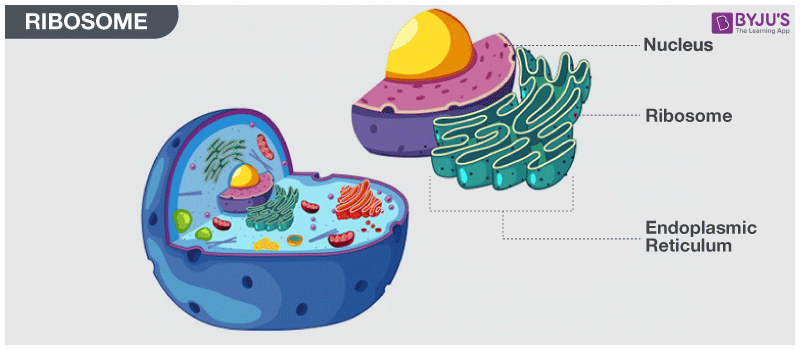
when an animal cell shrives, what is it called?
crenation
when a cell self destructs what is it called?
apoptosis
Cytoplasm
Jelly-like liquid that all the organelles are suspended in and allows chemicals to move around
Found in every space in the cell where there is not a organelle

Cell Membrane
Semipermeable (controls what goes in and out)
Outermost part of an animal cell (the second outermost of the plant cell)
A little line surrounding the entire cell
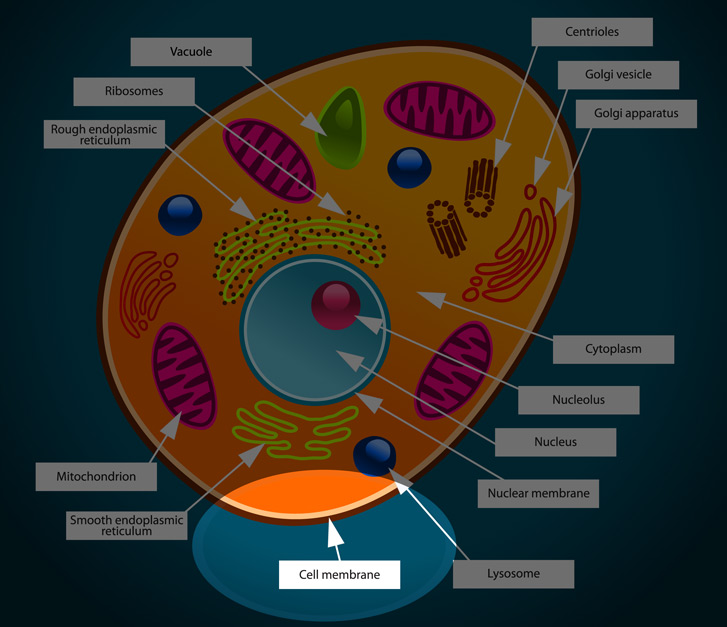
Nucleus
The control centre of the cell than regulates all the cell activities and contains Chromatin (compressed DNA )
a large circle found often in the center of the cell
Nucleolus
Inside of the nucleus, produced ribosomes
A small circle found in a larger circle ( in the bigger circle)
Nuclear membrane
Controls what goes in and out of the nucleus (gets broken apart during prophase)
A ring that surrounds the nucleus
Mitochondria
Produces energy, (using food and oxygen) with cellular respiration
Oval-shaped with wiggly lines in the centre
Endoplasmic Reticulum (E.R)
Work to produce materials and send it out and transporting system
Rough e.r with ribosomes attached: Produces proteins
Smooth e.r with no ribosomes attached: Produced fats in liver, detoxified drugs and alcohol
Tests and ovaries: produce testosterone and estrogen
Golgi bodies/Golgi apparatus
Stacked curve sacs
Takes what the E.R produces (proteins and lipid) and sends them off in vesicles
Vesicles:
Little small balls that act like packages for what the Golgi body send out
Vacuoles:
Store waste products and otehr things IN ONLY ANIMAL CELLS
Cytoskeleton
Internal support structure, organelle structuring, allows for the vesicle movement
Microtubules
25 nm diameter
Proteins form hollow tubes
Maintain cell and organelle shape
Help cell division (the centriole forms spindle fibres for prophase, microtubules help produce the spindle fibres)
Intermediate filaments
10 nm in diameter
Proteins coiled together into cables
Maintain the shape of the cell and some organelles
Helps the nucleus be supported and held in shape
Microfilaments
8 nm in diameter
Two strands wounded together
Maintain cell shape
these microfilaments produce the cleavage furrow during cytokinesis
Cell wall
ONLY FOUND IN PLANT CELLS
Tough material (cellulose) that surrounds the cell membrane (the outermost part of a plant cell)
Large Vacuoles
ONLY FOUND IN PLANT CELLS
store food (often starch)
store water to maintain fluid pressure (allows plant cell to stay straight up)
when the vacuole doesn’t have enough water in it, plants look wilted
chloroplast
ONLY FOUND IN PLANT CELLS
Contains green pigments called chlorophyll
Allow photosynthesis to occur to make starch for the plant
lysosomes
contains enzymes (break down waste and destroy bacteria) (ONLY FOUND IN ANIMAL CELLS)
centrioles
Produces rope like structures (spindle fibers) for mitosis
What is the fluid inside a cell called?
Intra-cellular fluid (ICF)
Aka cytoplasm
what is the fluid found around cells and capillaries
Interstitial fluid (IF)
What is the fluid found in capillaries called?
Extra cellular fluid (ECF)
What is the cell membrane made of?
Phospholipid bilayer
What is the phospholipid bilayer?
It has a head that made of phosphate (hydrophilic)
A tail that is made of lipids (hydrophobic)
there are two layers of phospholipids where the tails face each other, one layer itself is called a leaflet '
both layers are called a bilayers
phospholipids switch place in their leaflet, helps fix tears
How does double bonds affect the fluidity of the bilayer?
if the fats in the tails made double bonds instead of one bond, then it can cause kinks that take up more space, less tightly wound up, increases fluidity
Why is it bad if a bilayer is too fluid or not fluid enough?
if not fluid enough, not enough resources are entering the cells and it becomes too regulated
if too fluid, too many things enter the cell, not regulated enough
How does tail length affect the fluidity of the bilayer?
if tail longer than 16-18 carbon atoms long, fluidity can be reduced as tails gets stuck between leaflets
How does temperature affect the fluidity of the bilayer?
High - too fluid, not a good barrier
Low - too rigid, not enough things are entering and can solidify like that, causing the cell to die
how does Cholesterol effect the fluidity of the bilayer
depends on temp:
high and normal temp: cholesterol holds lipid tails together to decrease the fluidity that high temp causes
low temps: cholesterol lets go of lipid tails to increase fluidity (combats the low temps that decreases fluidity)
Passive transport overall:
follows the concentration gradient (only happens when things move from places of high concentration to places of low concentration, like oxygen-rich air to CO2 blood)
the logic behind it is that it’s easier and requires less energy to move something into a space that stuffs more of something to a packed place
doesn’t require ATP
What are solutes and solvants?
solutes - things in the body, sugar, oxygen, solid things
Solvents - body fluids, blood or ECF
What is diffusion:
Movement of solutes with the concentration gradient, until both side have an equal amount of the solute
Osmosis
Water going from a place with low solutes (and high water) to an area with low water and high solutes '
When does osmosis occur?
when solutes are too large to move across the bilayer, causing water to come in and dilute the side with more solute and less water, until both sides are equal
WHat is passive transport?
normal diffusion with the help of proteins found in the cell membrane
Are the proteins located in the cell membrane hydrophobic or hydrophilic (carriers and channels
Hydrophobic outside to not disturb the hydrophobic tails
Hydrophilic on the inside, to encourage molecules to pass through it
What is the first type of protein found in the cell membrane?
Channel protein:
Always open (unless closed due to signals)\
brings in large molecules and ions (often charged)
What is the first type of protein found in the cell membrane?
Carrier proteins:
not always opens
binds and takers the shape of what they are transporting, opens (like a clam) on one side of the wall to the other side
How does osmosis impact cell structure?
When a solute can’t move across the cell membrane, we rely on water to make up fro the difference
What is a isotonic solution?
the concentration of the solute is equal on both sides
no net movement (the same amount of water is leaving and entering the cell)
cells shape and condition do not change
hypotonic solution?
the concentration of the solute is too concentrated on the inside of the cell, this causes more water to come into the cell to balance everything
overall, more cell is entering the cell than leaving the cell
how is a hypotonic solution different in animal cells and plant cells
in animal cells, the cell will burst if it stays in that condition for a long time (CALLED LYSIS)
in a plant cell, the water goes to the large vacuole and pushes the cell membrane against the cell wall
this pressure keeps the cell firm and is (CALLED TURGOR PRESSURE)
hypertonic solution?
the concentration of the solute is greater outside the cell, this causes water in the cell to move out, to balance everything
there is more water going out then in
How is hypertonic solution different in animal cells vs plant cells
Animal cells: cell shrivels (CALLED CRENATION)
plant cells: the organelles arent being pushed and the TURGOR PRESSURE is gone
How can relative concentration affect the rate of diffusion?
The bigger the difference on both sides, the faster diffusion
How can size affect the rate of diffusion?
the bigger the molecule, the harder it is to diffuse it
How can polarity affect the rate of diffusion?
A small polar molecule, can pass the membrane, through the bilayer
a large molecule cannot pass through, as the membrane is not polar
How can temperature affect the rate of diffusion?
the higher the temp, the faster diffusion as movement is speed up
How can high pressure affect the rate of diffusion?
High pressure forces molecules cross the membrane, therefore increasing the rate of diffusion
DNA is condensed into what? Why is it condensed?
DNA is very long and is condensed into a structure called chromosomes
it also protects the DNA and keeps it safe
How many chromosomes does a human cells have?
46 chromazones (half from one parent each)
is DNA the same in every single cell for one person?
yes, the DNA in your stomach cell is the same as the DNA in your nerve cell
Are mutations always serious?
Not always, if a mutation occurs in a sperms or egg cells, then the child will inherit the mutation
Why does cell division happen?
for growth, reproduction, repair and healing, and replacing old dead cells
what are pros and cons of both types of reproduction
asexual:
pros: produces a offspring with only one parents and very quick process
cons: offspring is genetically identical to the parent there is no gene diversity
sexual:
pros: offspring has both parents genetic info (gene diversity)
cons: slow reproduction, energy wasting
what are two types of cells:
gametes: eggs and sperm cells
somatic cells: all other body cellsv
What is the first stage of the cell cycle?
Interphase 0 where cells spend 90% of the cell cycle
the first stage of interphase
growth 1 (G1): cell grows and become very large to help prepare to divide in half
chromosome have been unwound for duplication (unwound chromosome called CHROMATIN)

second phase of interphase
synthesis (S phase)
chromatin has been duplicated, to sister chromatids
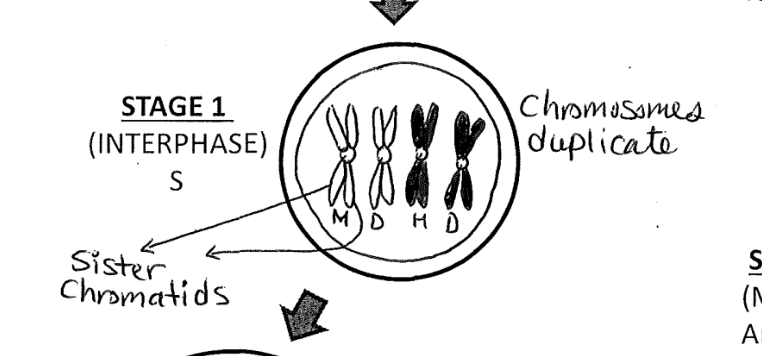
last stage of interphase
growth 2 (G2)
cell get noticeably bigger, gets ready to divide
the cell need to duplicate a cell of its original cell size, meaning the cell must first duplicate to do this
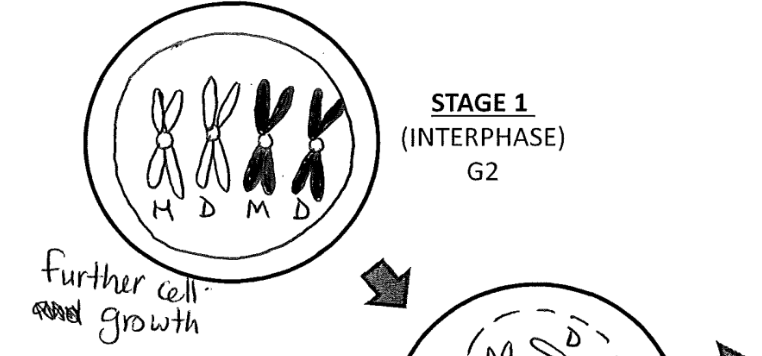
What is stage 2 of the cell cycle?
mitosis (PMAT)
prophase, metaphase, anaphase, and telophase
first stage of mitosis
prophase:
CHROMAZONES FINALLY BECOME VISIBLE
nuclear membrane, where the chromosomes are held starts to dissolve
centrioles goes to opposite sides of the cell and shoots out spindle fibres
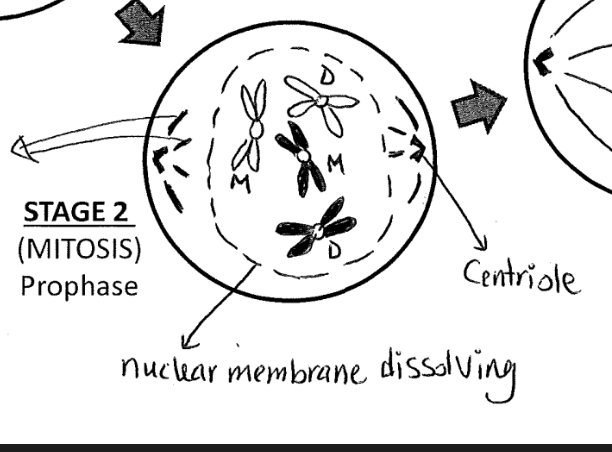
second stage of mitosis
metaphase (middle)
the chromosomes line up in the middle of the cell, (nuclear membrane gone by now)
the spindle fibres attached to a centromere (centre of a chromosome) (one from the left and one from the right, so that sister chromatids can be seperated)
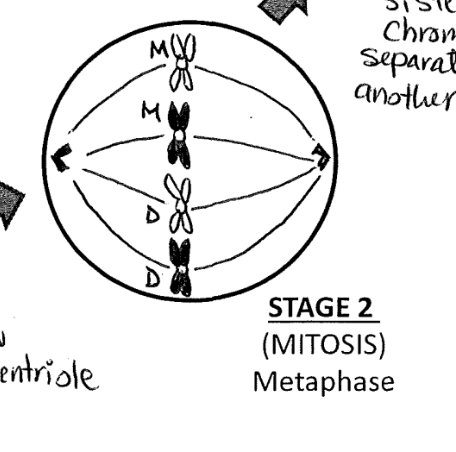
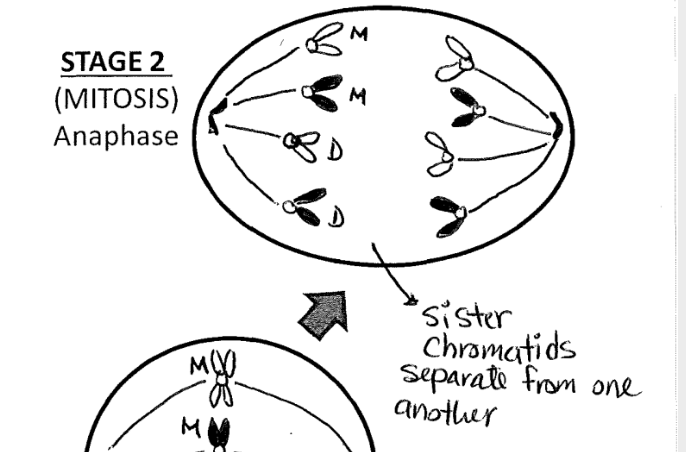
Third stage of mitosis
Anaphase (away)
sister chromatids are divided by the spindles fibres that are now pulling back, toward the centriole, centromere splits in half and goes both ways
Last stage of the mitosis
telophase and cytokinesis happen at the same time
the sister chromatids have official split apart
New nuclear membranes are now forming around the separated chromosomes
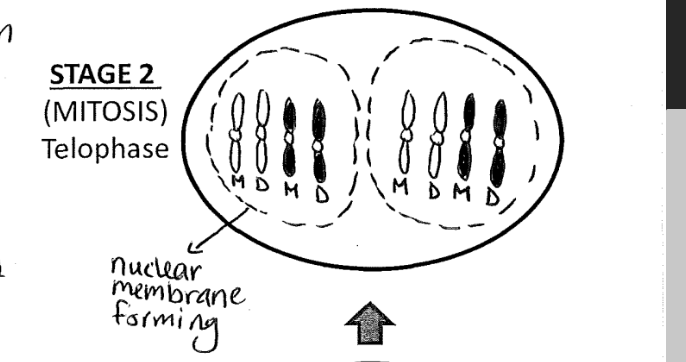
last stage of the cell cycle
cytokinesis: where the cell divides
in animal cells: a cleavage furrow is developed in the middle of where the two cells are dividing and pinches the cell causes them to separate
plant cells: a cell plate forms in the centre of the cells, sort of the cutting them away from each other, as a plant cell is to ridge to be pinched by a cleavage furrow)

What are checkpoints in the cell cycle?
Between the stages of interphase and mitosis, specialized proteins monitor the cells’ activities and surround cells (at specific points)
these proteins send a message to the nucleus, telling it if the rest of the cell should continue with the cell cycle and division or not
Why might proteins at checkpoints of the cell cycle refuse to tell the nucleus to divide?
Signals from surrounding cells tell the cell not to divide, not enough energy/nutrients for cell division, and DNA hasn’t been replicated properly
DNA is damaged
if not severe, then the cell cycle is stopped, DNA is fixed and the cycle continues
If severe, then the cell will self-destruct (CALLED APOPTOSIS)
What is cancer?
a disease caused when checkpoints in the cell cycle fail
Mutation can cause uncontrolled cell division and results in too many cells in one place (a tumour)
some tumours are cancerous and result in cancer
What are the 3 things that can cause cancer
genetic: when gametes pass down mutations, cancer can also be passed down
Environmental: some mutations develop due to poor lifestyles, viruses or interactions with other toxins
a mix of both: people can inherit mutations that increase chances of cancer, which are then triggered by environmental causes
what are the two types of tumor?
benign tumour: a mass of cells that increases for no function that does not affect surrounding cells
Malignant tumour: a mass of cells that increases for no function and destroys surrounding tissues and disrupts enzymes and hormones production
What is metastasis?Why is it dangerous?
when cancer cells break away from the original tumour and move to another part of the body, they may settle and start dividing and forming a second tumour
Metastasis is dangerous as different tumours can spread and grow to different parts of the body
How to avoid cancer?
avoid tobacco smoke, as it has chemicals that damage DNA and causes tumours
Eat healthy and work out
antioxidants in fruits and vegetable reduce your risk of some cancers
Cancer screening for everyone:
is important, defiantly if your family has a history of certain cancers, alternative is a genetic screening, (shows if you have DNA that is linked to certain types of cancer)
If all cells have the same DNA, then why do different cells look different?
cells function and shape are different due to some gene expressed and some and not expressed
what are the different regions of DNA
regions of DNA that have control over genetics and activities are called EXONS
regions of DNA that have no control over genetics are called INTRONS
Why is cell differential important?
It allows different cells to have their shape fit their function
What is a stem cell?
Do not have specific task/not specialized yet, but can be turned into a specialized cell, (bland or stater off cells)
What is an embryonic stem cell:
Comes from embryos (baby in wombs), can be turned into any kind of cell (this is called pluripotent)
Once a baby is born, these cells no longer exist
What is a tissue stem cell
Found in speclspecializedized cell
Limited, it can only be turned into some other cell type (called multipotent)
what is a induced pluripotent stem cells (IPL)
Adult cells that can be manipulated in a lab to be changed into another type of specialized cell, can help with organ tissue transplantation
goblet cells
has glads that produce of the mucus in our nose (gets the passage warm, traps dirt)
cilia cells:
sweeps up the dirt and bacteria that has been trapped by mucus towards mouth or nose for removal
sperm cells:
Flagellum help with movement
head is aerodynamic
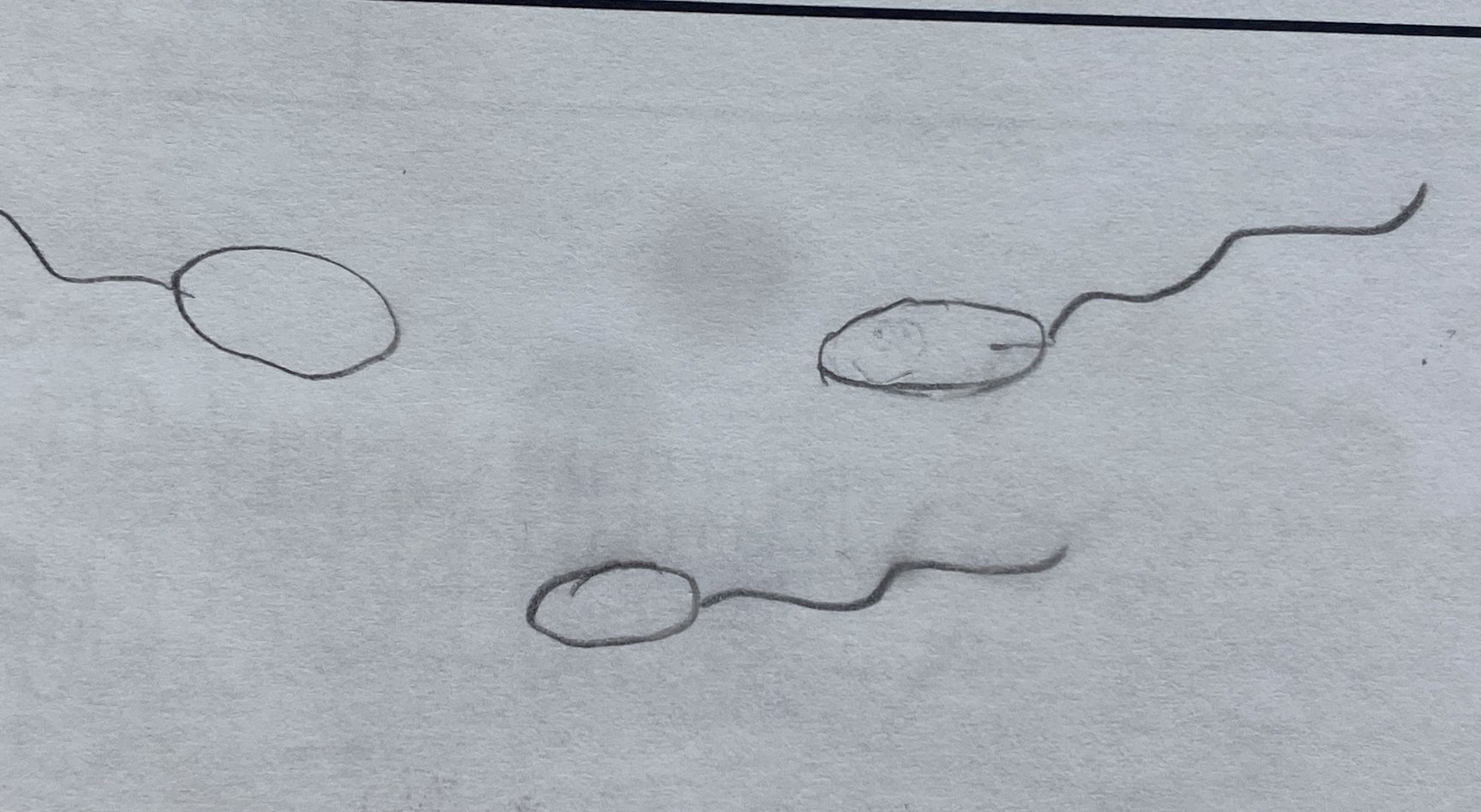
egg cells
the egg has proves and ridges in it that helps the sperm land and inseminate the egg
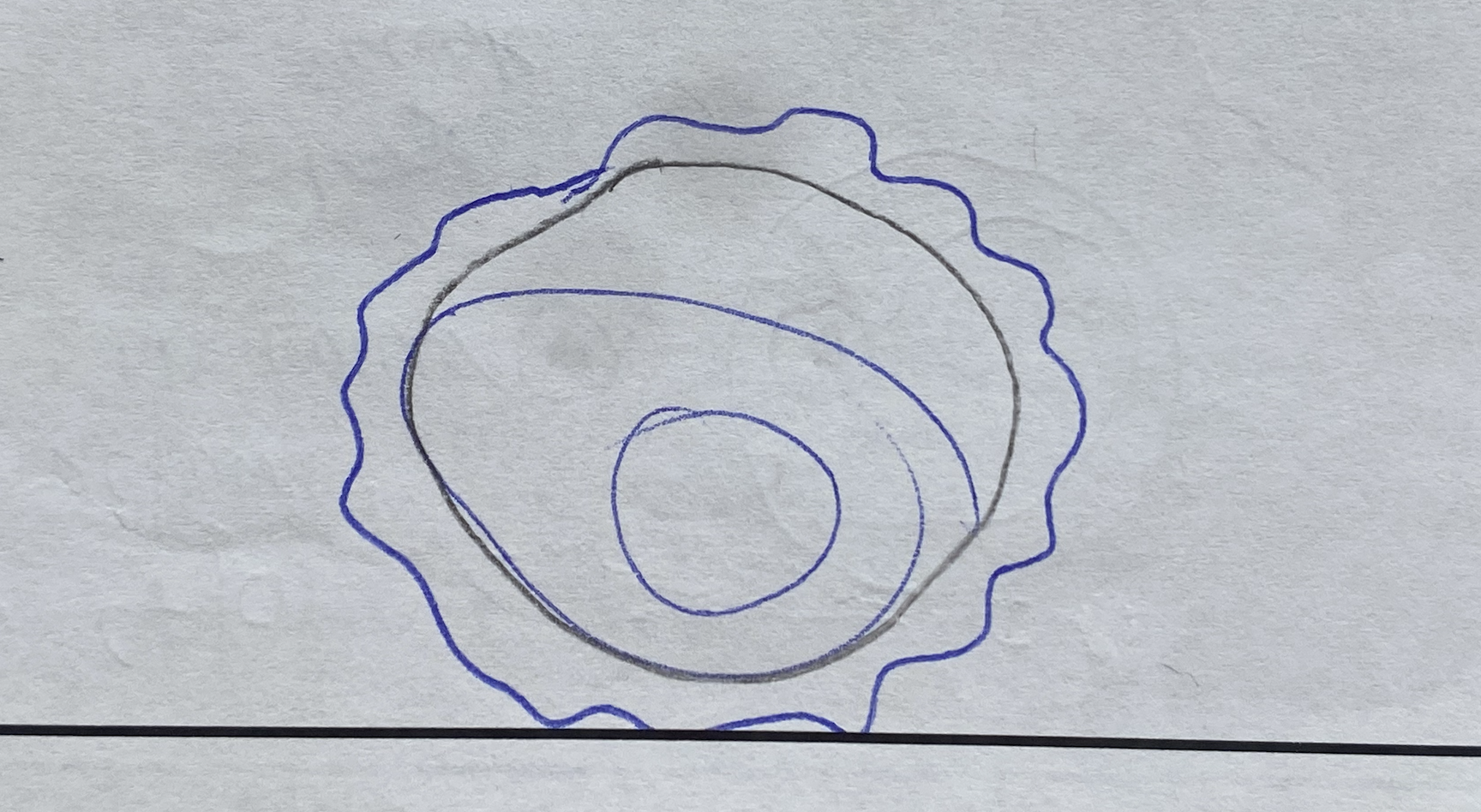
fat cells
large vacuole that stores the fat
cushions and insulates the body
production of some hormomes
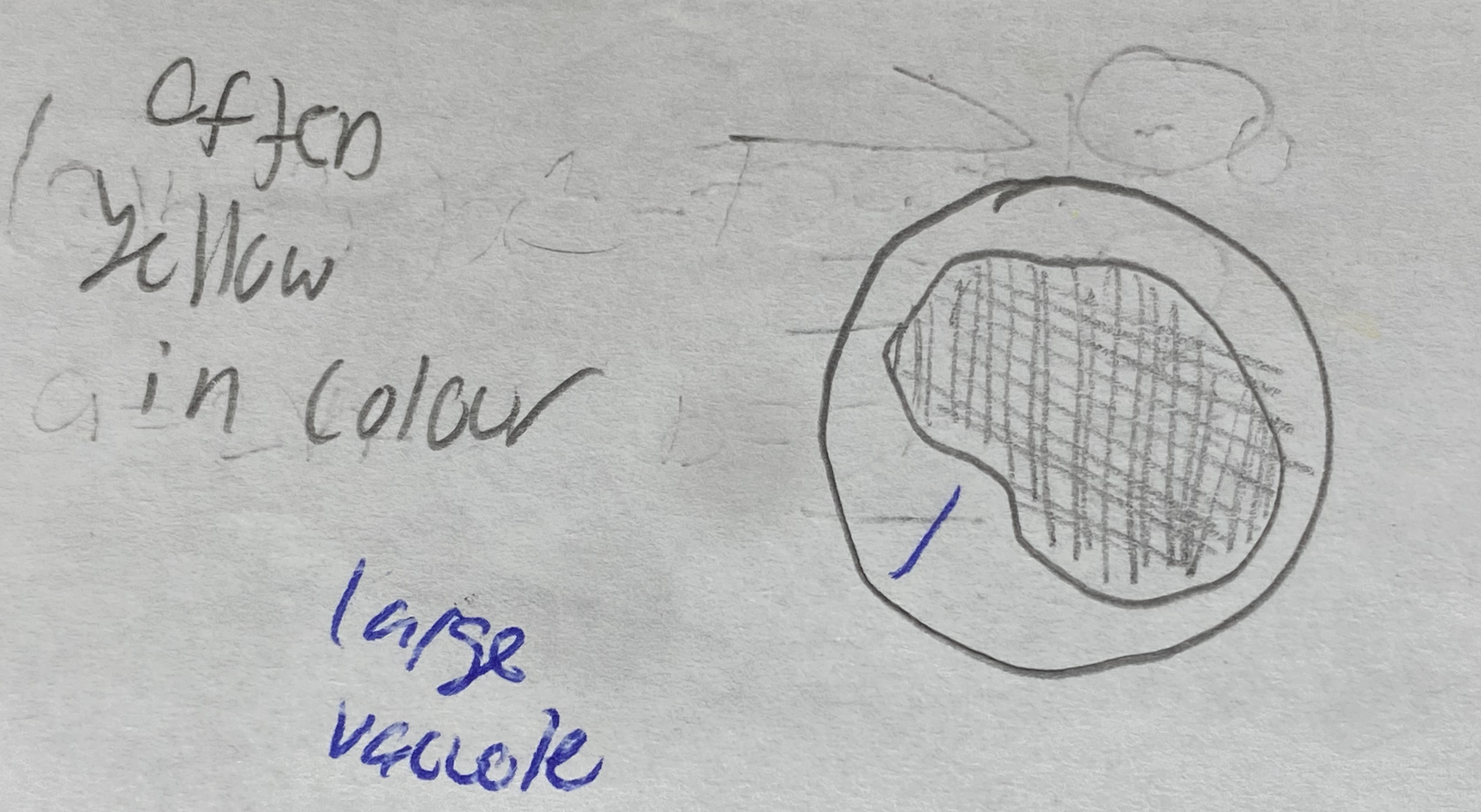
Inner ear hair cells
Flexible and tubular cells that are sensitive to vibration caused by sound waves
translates vibrations and sends signals to brain to interpret sound
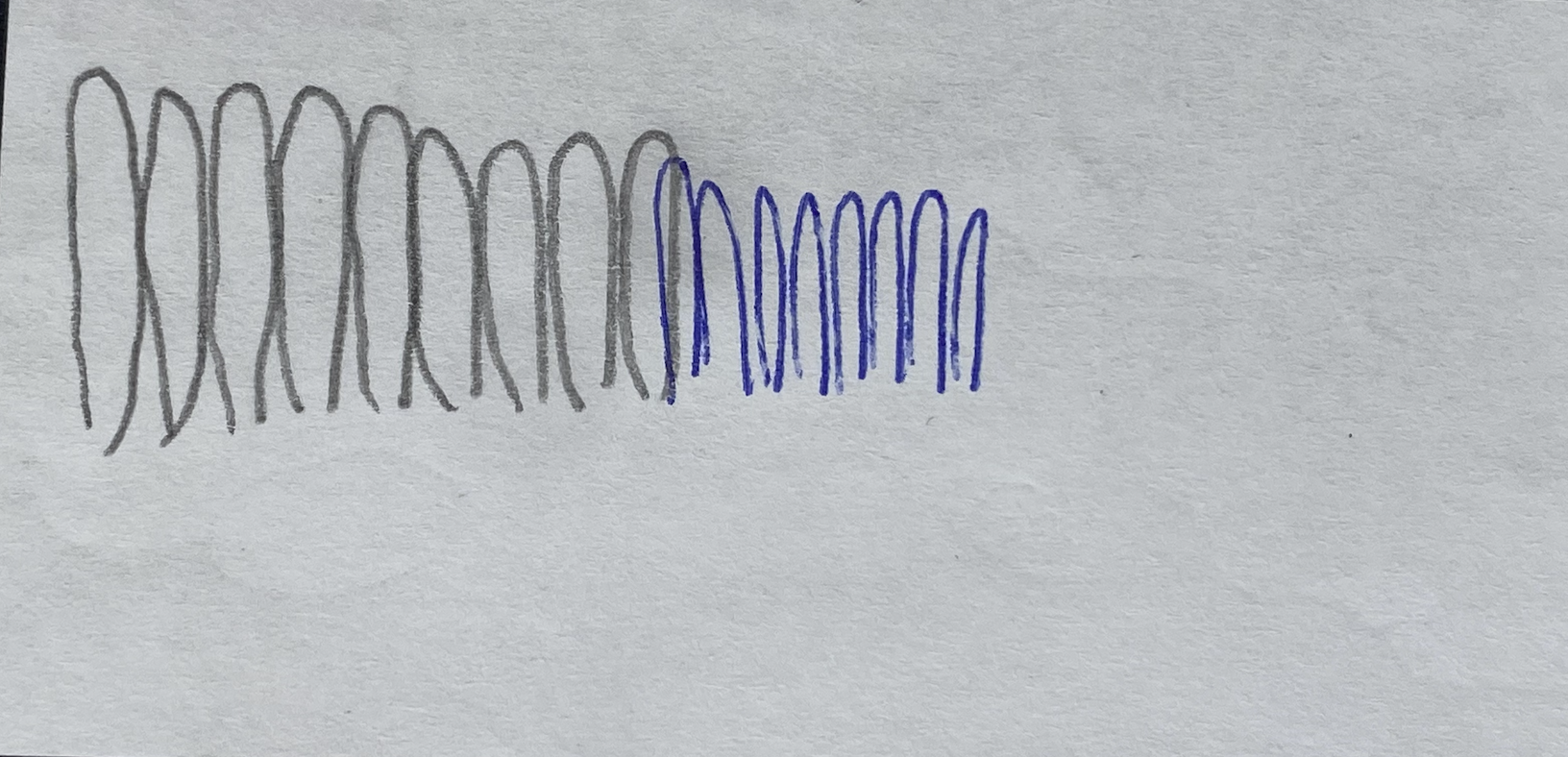
red blood cells
circular shape helps aerodynamics
no nucleus making it lighter
helps transport o2 co2 and other substances
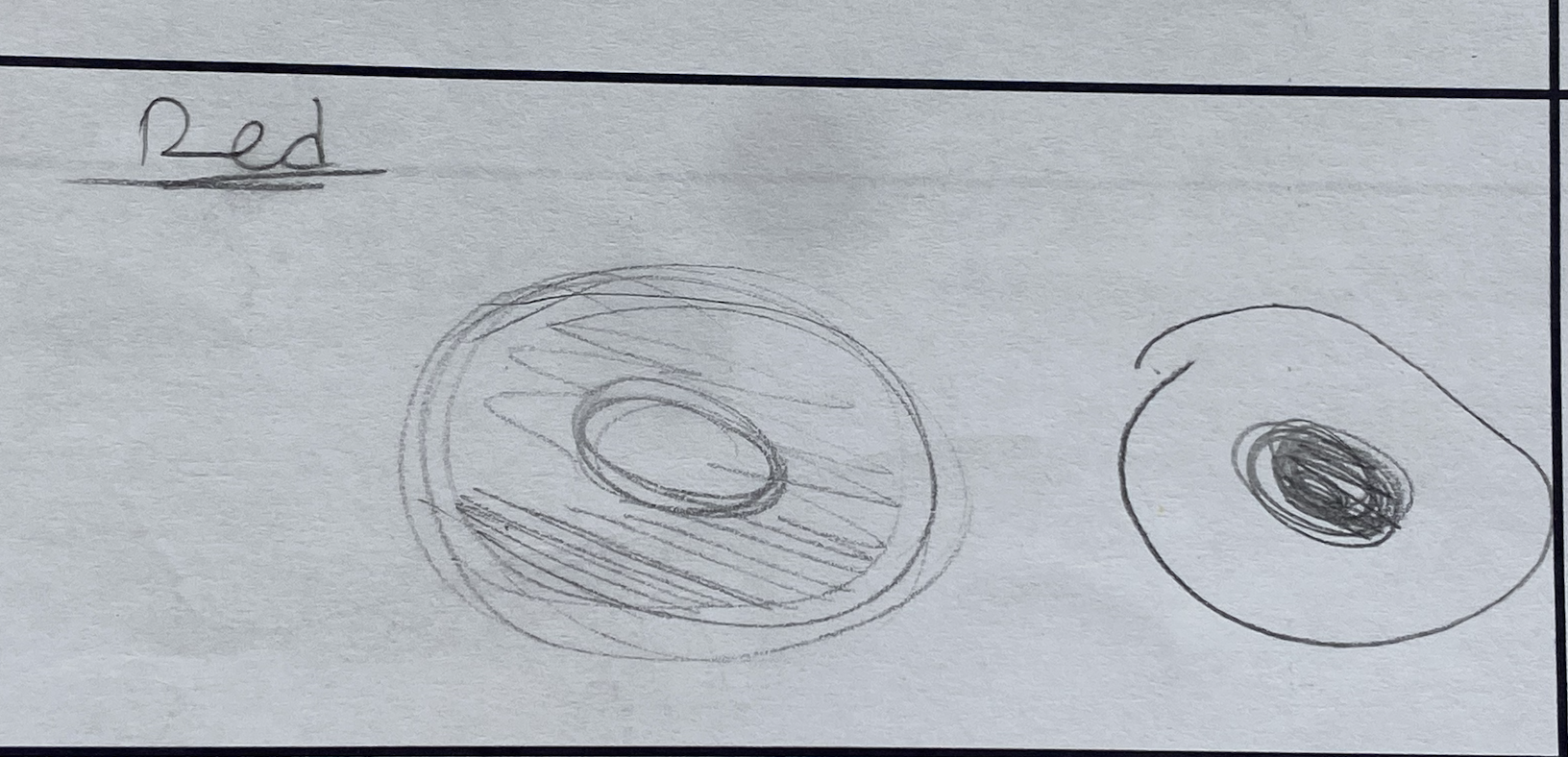
muscle tissue
Contractile filaments slides past one another to produce force and cause motion
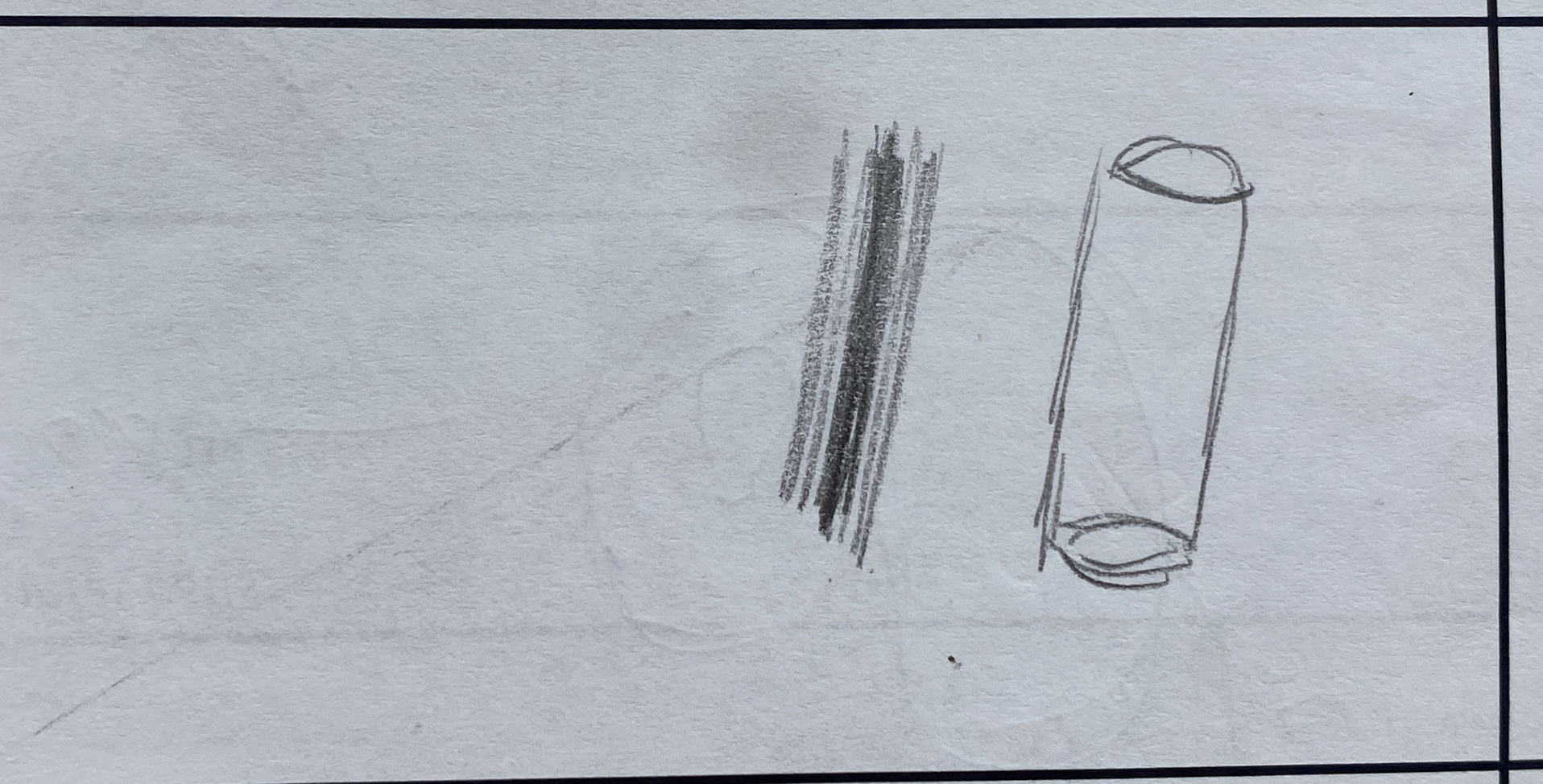
healthy cells vs cancer cells
normal cells: large cytoplasm, single nucleus and nucleolus
thick chromatin
cancer cell: small cytoplasm, many nuclei and nucleoli (bigger)
thin chromatin
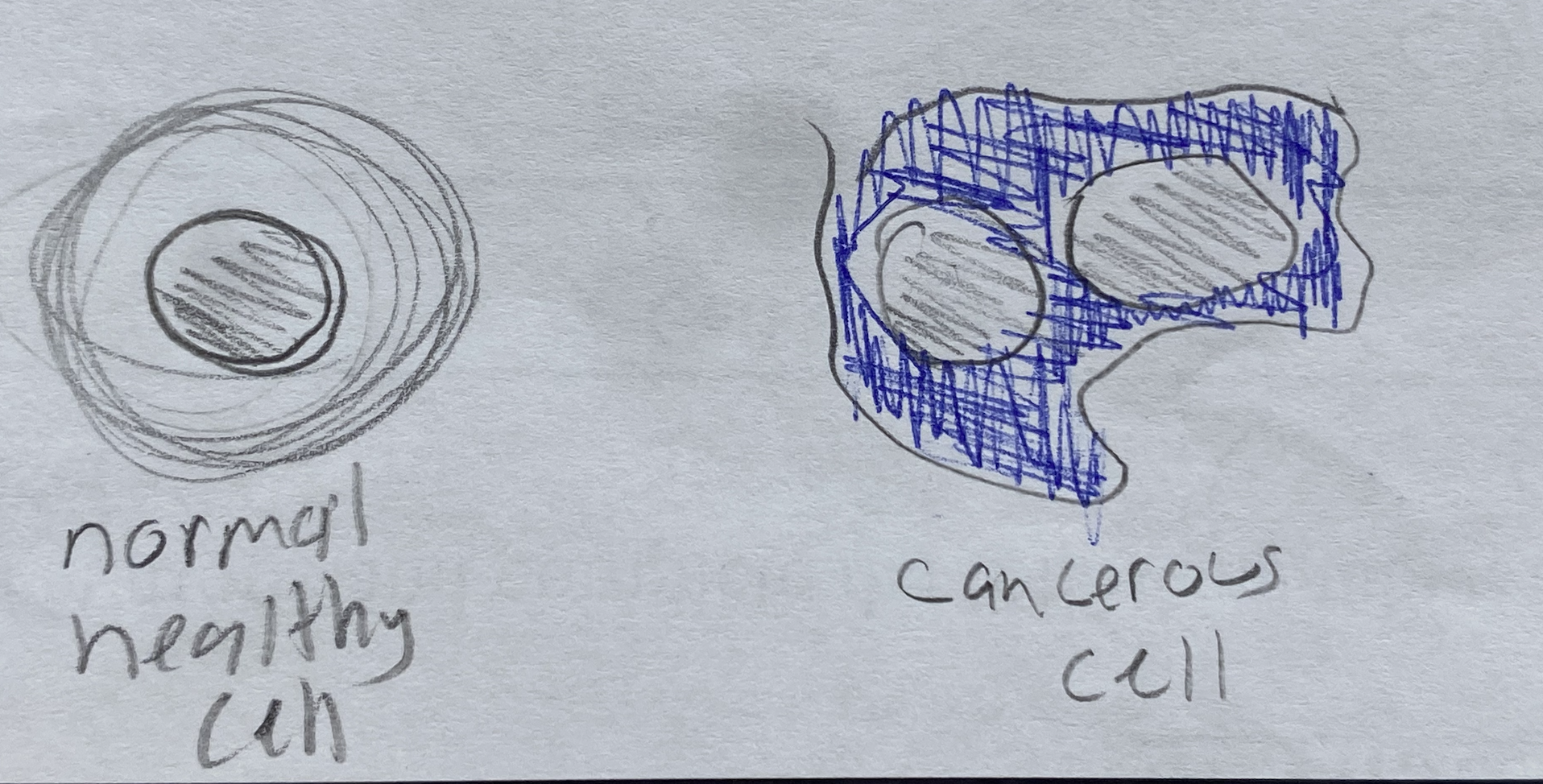
hypotonic
solute concentration is higher in the cell
hypertonic
solute concentration is higher outside the cell
radiation therapy to help cancer
kills cancer cells w/ionization
chemo therapy to help cancer
helps metastasized cancer
effective
also kills cells like hair and nails
surgeries to help cancer
very exact
painful recovery
doesn’t work for metastasize cancer